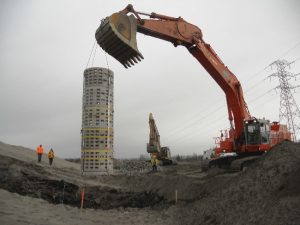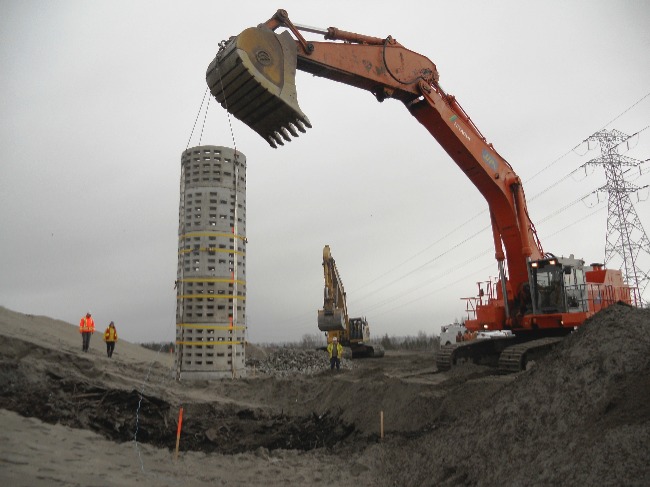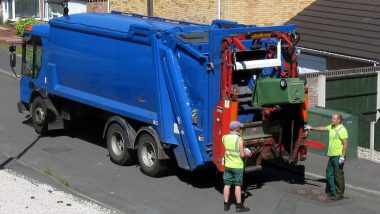The following is an explanation of the requirements of the DSEA Regulations for Landfill Site DSEAR Risk Assessment, and what they mean for landfill site owners and operators.

All landfill owners (and by delegation their operators) fall under this regulation, and must act in order to comply with Dangerous Substances and Explosive Atmospheres Regulations (DSEAR) which have been in force since July 2006. DSEAR – Implementing the Chemical Agents Directive 98/24/EC (CAD), and the Explosive Atmospheres Directive 99/92/EC (ATEX 137)
All but the oldest landfills will still be capable of generating methane and most contain chambers associated with leachate and surface water drainage. This means that under the DSEA Regulations, site owners must carry out various actions in order to comply with the new dangerous substances and explosive atmosphere regulations.
The following is based upon extracts from a document of the same name as the above on the UK Health & Safety Executive web site:-
Employers and the self-employed must:
- Carry out a risk assessment of any work activities involving dangerous substances;
- Provide technical and organisational measures to eliminate or reduce as far as is reasonably practicable the identified risks;
- Provide equipment and procedures to deal with accident and emergencies;
- Provide information and training to employees;
- Classify places where explosive atmospheres may occur into zones, and mark the zones where necessary. (This duty is being phased in – see table below for dates.)
- In workplaces where explosive atmospheres may occur you should ensure that:
- areas where hazardous explosive atmospheres may occur are classified into zones based on their likelihood and persistence;
- areas classified into zones are protected from sources of ignition by selecting equipment and protective systems meeting the requirements of the Equipment and Protective Systems Intended for Use in Potentially Explosive Atmospheres Regulations 1996, although equipment already in use before 1 July 2003 can continue to be used indefinitely provided the risk assessment shows it is safe to do so;
- where necessary, areas classified into zones are marked with a specified “EX” sign at their points of entry; where employees work in zones areas they are provided with appropriate clothing that does not create a risk of an electrostatic discharge igniting the explosive atmosphere;
- before coming into operation for the first time, areas where explosive atmospheres may be present are confirmed as being safe (verified) by a person (or organisation) competent in the field of explosion protection. The person carrying out the verification must be competent to consider the particular risks at the workplace and the adequacy of control and other measures put in place.
- Guidance on the classification and zoning of areas where potentially explosive atmospheres may occur, and the selection of equipment for use in those areas can be found here.
Remember: All existing workplaces/landfill sites must meet the DSEAR (DSEA Regulations) and ATEX requirements!
This part of DSEAR complements the Equipment and Protective Systems Intended for Use in Potentially Explosive Atmospheres Regulations 1996. There is a DTI web page giving further information here.
What is the ATEX Directive?
The full title is the “Explosive Atmospheres Directive (ATEX 137)”.
The Explosive Atmospheres Directive (ATEX 137) is a European Union Directive which requires employers to protect workers from the risk of explosive atmospheres.
An explosive atmosphere is defined as a mixture with air, under atmospheric conditions, of dangerous substances in the form of gases, vapours, mist or dust in which after ignition has occurred, combustion spreads to the entire unburned mixture.
As a flammable or explosive substance or dust must be present to create an explosive atmosphere there is considerable overlap between the Chemical Agents Directive (CAD) and ATEX.
Landfills
If sufficiently experienced in the assessment of landfill gas they should now be carrying out the necessary risk assessments and other actions to ensure the safety of those connected with their sites. If not suitable experienced, they should engage suitable expert advice.
For operating landfills the Site Manager will normally be responsible for DSEAR compliance, however, the selection of the responsible person is less clear for closed landfills, and many may need specialist advice.
The zoning for confined spaces within landfills is becoming a matter for very careful consideration indeed, given the cost implications of installation of hazard zone compliant pumping systems. The HSE has published some guidance for landfill operators here…
New Industry Codes of Practice (ICoPs) are being drafted for the waste management industry, with the first released in November 2005. The first documents already show how to apply hazard zoning in gas and leachate collection wells, and zoning for the area of gas dispersion in the air above gas wells, leachate wells, and monitoring boreholes.
Nevertheless, the assessments need to be done carefully, and it may be prudent to collect data on methane concentrations in advance of the assessment.
Waste Facilities
As none of the Waste Industry ICoPs have yet been written for waste facilities, only general initial assessments can be completed in advance. If full assessments are carried out in advance of the ICoPs, there will be some risks that when the relevant ICoPs are published that some changes may arise. However, due to the short time scale remaining operators may wish to scope their liabilities now. This may be prudent in order that suitable budgets and resources can be put in place in advance of the June 30, 2006 deadline.
Who Is Responsible for the DSEAR Risk Assessment?
You may well ask “Who Is Responsible for the DSEAR Risk Assessment?” The person who Is responsible for carrying out the DSEAR Risk Assessment for any workplace is a good question. One which may arise when a number of contractors, and sub-contractors operate on a site, where an explosion hazard is present which requires the […]
DSEAR Risk Assessment – What is It, and When Must It be Done?
A DSEAR Risk Assessment is defined as “a Risk Assessment which assesses all the risks which are risks which fall within the scope of the UK’s DSEAR”. For those unfamiliar with DSEAR, the following extract from the UK governments HSE website defines the meaning of DSEAR: The DSEAR Explained The Dangerous Substances and Explosive Atmospheres […]
DSEAR Meaning? What is the Meaning of DSEAR? What are the DSEAR Regs?
The DSEAR meaning is very specific, and is easily defined. DSEAR (The Dangerous Substances and Explosive Atmospheres Regulations of 2002) is the United Kingdom’s implementation of the European Union-wide ATEX directive. The intention of the Regulation is to reduce the risk of a fatality or serious injury resulting from a “dangerous substance” igniting and potentially […]




